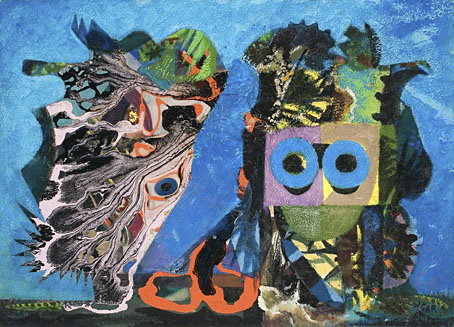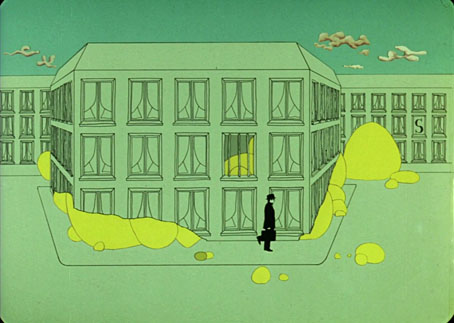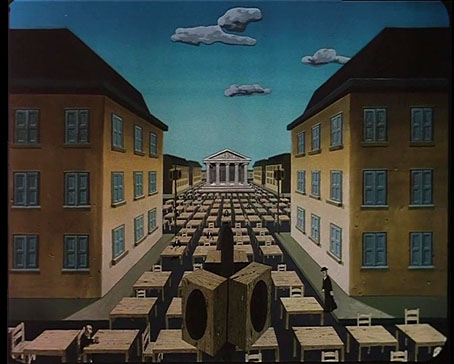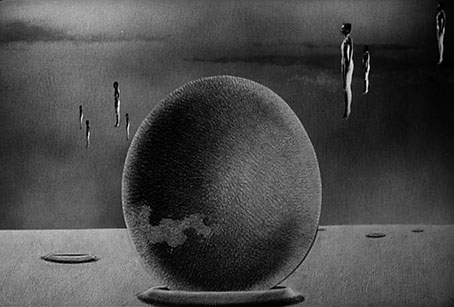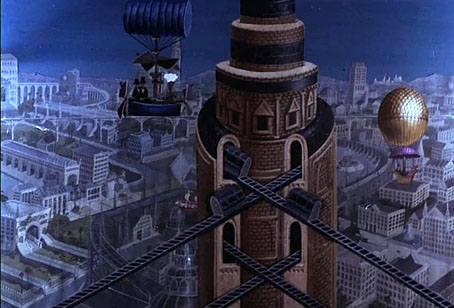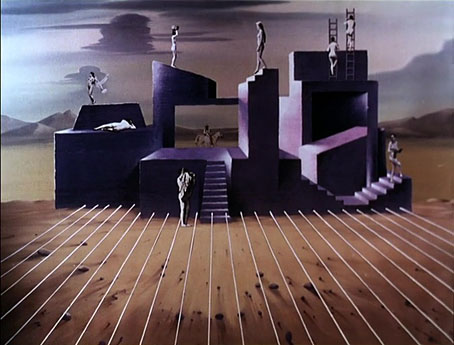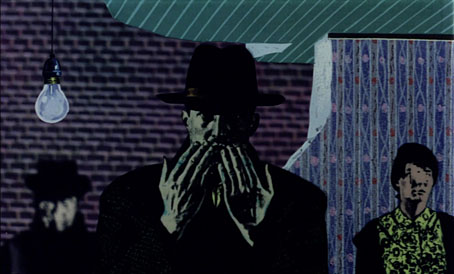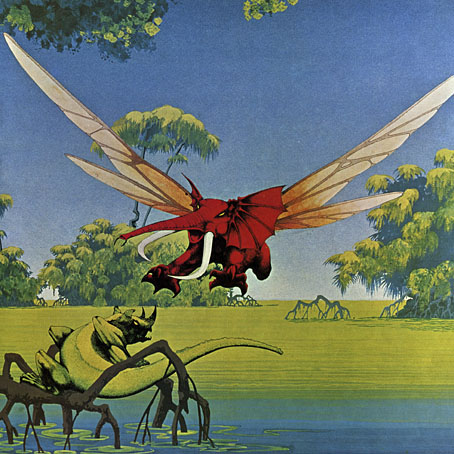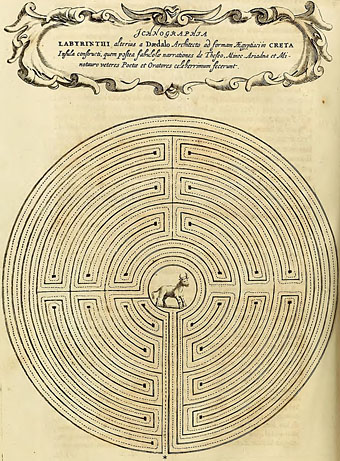
La ville de bas en haut (1961).
Back in January I had a vague intention to write about new areas of Surrealist interest in the months leading up to Surrealism’s 100th anniversary, an impulse that didn’t really sustain itself. That’s okay, almost everything I add to these pages is the result of a whim of some sort, and whims are often short-lived and erratic. All the same, Jean Ransy may fit the Surrealist bill even if he doesn’t seem to have had any lasting connections with those groups who regarded themselves as the official guardians of the Surrealist flame. Ransy was Belgian artist which makes him Surrealist by default if you subscribe to Jonathan Meades’ proposition that Belgium is a Surrealist nation at heart. (Magritte wasn’t a Surrealist, says Meades, he was a social realist.)

Composition surréaliste au coquillage (1962).
Ransy’s paintings appear at first glance like a Belgian equivalent of Rex Whistler in their pictorial realism and refusal to jump on the Modernist bandwagon. Whistler and Ransy were contemporaries (Whistler was born in 1905) but Whistler’s paintings were much more restrained even when outright fantasy entered his baroque pastiches. The “metaphysical” vistas of Giorgio de Chirico are mentioned as an influence on Ransy’s work so he was at least looking at living artists, something you never sense with Whistler. There’s a de Chirico quality in the tilted perspectives and accumulations of disparate objects, also a hint of Max Ernst in one or two paintings. Most of the pictures here have been hoovered from various auction websites but the artist’s official website has the best copies plus biographical information. (Ransy tip via Anne Billson. Thanks!)

Le chant du printemps (1968).

Diane (1969).

La nuit silencieuse (1970).

